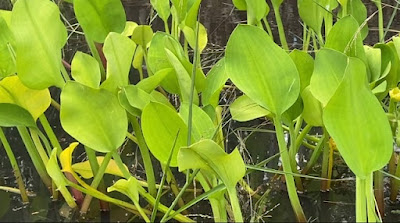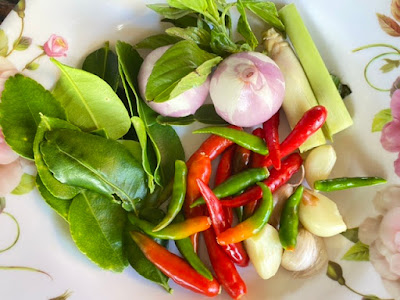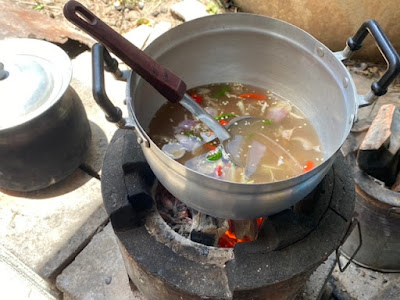ตรวจสอบชื่อกล้วยไม้ ในหอพรรณไม้ สวนพฤกษศาสตร์มากิโน ประเทศญี่ปุ่น
สันติ วัฒฐานะ
สวนพฤกษศาสตร์สมเด็จพระนางเจ้าสิริกิติ์
องค์การสวนพฤกษศาสตร์
14 มีนาคม 2558
ระหว่างวันที่ 1-13 มีนาคม
2555 ผมได้รับเชิญจากสวนพฤกษศาตร์มากิโน ประเทศญี่ปุ่น
ให้ไประบุชื่อตัวอย่างกล้วยไม้ที่เก็บมาจากประเทศพม่า ภายใต้โครงการสำรวจชนิดพรรณไม้ในเขตอุทยานแห่งชาตินัทมาตาง
รัฐฉิ่น ประเทศพม่า โดยมีเป้าหมายที่จะนำแสนอรายชื่อพืชที่พบในป่าธรรมชาติของอุทยานแห่งชาตินัทมาตาง
ภารกิจของผม คือ ระบุชื่อตัวอย่างกล้วยไม้ในหอพรรณไม้แห่งนี้ตามวัตถุประสงค์ดังกล่าว
ตัวอย่างพรรณไม้ที่ผมต้องระบุชื่อมีอยู่ 2 รูปแบบ คือ
ตัวอย่างแห้ง ซึ่งเป็นกิ่งที่มีดอกมาอัดแห้งแล้วเย็บบนกระดาษแข็งสีขาว และตัวอย่างดองซึ่งเก็บชิ้นส่วนของพืชดองไว้ในขวดแอลกอฮอล์
70% การเก็บตัวอย่างทั้งสองแบบนี้จะเป็นการเก็บตัวรักษาอย่างให้ได้ยาวนานเพื่อใช้เป็นตัวอย่างในการศึกษาวิจัยและการอ้างอิง
ส่วนของดอกจะเป็นส่วนที่สำคัญที่สุด เนื่องจากเป็นส่วนที่ใช้ในการเปรียบเทียบความแตกต่างระหว่างชนิดพันธุ์
เราจะเห็นว่าในแต่ละตัวอย่างต้องมีป้ายรายละเอียดพันธุ์ไม้ติดอยู่
โดยจะเขียนลักษณะที่มองไม่เห็น หรือลักษณะที่เปลี่ยนไปเมื่อกลายเป็นตัวอย่างแห้ง
เช่น สี ลักษณะนิสัย (เช่น ไม้ต้น ไม้ล้มลุก ไม้อิงอาศัย หรือกาฝาก เป็นต้น)
สถานที่เก็บ วันที่ และข้อมูลอื่นๆ
ที่จะเป็นตัวแทนของลักษณะทางพฤกษศาสตร์ของพืชชนิดนั้นๆ
ตัวอย่างแต่ละตัวอย่างจึงเป็นตัวอย่างสำหรับการวิจัย
 |
| หอพรรณไม้ที่เก็บรวบรวมตัวอย่างแห้ง ที่สวนพฤกษศาสตร์มากิโน Herbarium specimens in Makino Botanical Garden's herbarium |
เนื่องจากส่วนของดอกกล้วยไม้จะถูกอัดทับจนแบนและแห้ง
ผมจึงต้องนำดอกกล้วยไม้ในแต่ละตัวอย่างไปต้มและใส่น้ำยาล้างจานไปเล็กน้อยเพื่อไล่อากาศในเซลล์
โดยพยายามไม่ให้ตัวอย่างเสียหาย นักพฤกษศาสตร์คนอื่นจะได้มาดูต่อ จากนั้นจะศึกษาตัวอย่างใต้กล้องสเตอริโอซูม
หรือกล้องขยาย เพื่อศึกษารายละเอียดโครงสร้าง รูปร่าง
หรือลักษณะทางพฤกษศาสตร์ของแต่ละตัวอย่าง แต่สำหรับตัวอย่างดอง
เราไม่จำเป็นต้องนำไปต้ม เพราะรูปทรงยังคงเดิม เพียงแต่สีหายไปเท่านั้น
อุปกรณ์ที่สำคัญสำหรับการระบุชื่อ คือ รูปวิธาน หรือ key สำหรับระบุสกุลและชนิดกล้วยไม้
ซึ่งจะอยู่ในเอกสารทางพฤกษศาสตร์ และหนังสือพรรณพฤกษชาติ (flora) ของแต่ละภูมิภาค หรือแต่ละประเทศ เช่น พรรณพฤกษชาติของประเทศจีน
พรรณพฤกษชาติของประเทศภูฎาน หรือพรรณพฤกษชาติของประเทศไทย เป็นต้น
รวมถึงผลงานตีพิมพ์ทางวิชาการในวารสารทางพฤกษศาสตร์ต่างประเทศ
ที่ทำการทบทวนกล้วยไม้ในแต่ละสกุล ซึ่งปัจจุบันหนังสือพรรณพฤกษชาติยังไม่สมบูรณ์ โดยพื้นฐานแล้ว
ชนิดกล้วยไม้ในประเทศพม่าจะใกล้เคียงกับของไทย ผมจึงใช้เอกสารวิชาการ ชุด
สกุลกล้วยไม้ในประเทศไทย (the orchid genera of Thailand)
เขียนโดย Dr.Gunnar Seidenfaden เป็นหลัก
และค่อนข้างโชดดีที่ในหนังสือพรรณพฤกษชาติเหล่านั้นมีคำบรรยายลักษณะทางพฤกษศาสตร์และมีภาพวาดทางพฤกษศาสตร์ประกอบด้วย
เมื่อได้ชื่อตามรูปวิธานแล้ว เราสามารถตรวจสอบอีกครั้งกับลักษณะทางพฤกษศาสตร์ว่าตรงกันหรือไม่
 |
| สภาพโต๊ะทำงานในการตรวจสอบชื่อกล้วยไม้ มีเตาไฟฟ้า หนังสือพรรณพฤกษชาติ กล้องสเตอริโอซูม คอมพิเตอร์ที่เชื่อมต่อกับอินเตอร์เนต ตัวอย่างแห้ง และตัวอย่างดอง Work environment for identification shows electric stove, flora books, steriozoom microscope, computer with internet connection, dried and spirit specimens. |
ลักษณะของรูปวิธานจะมีลักษณะทางพฤกษศาสตร์ให้เลือกเป็นคู่
ซึ่งแต่ละคู่จะเป็นส่วนโครงสร้างของพืชแบบเดียวกัน เช่น ดอกมีเดือยกลุ่มหนึ่ง
และดอกไม่มีเดือยอีกกลุ่มหนึ่ง จากนั้นเราก็ดูว่าตัวอย่างของเราว่า
เป็นชนิดที่มีเดือยหรือไม่ เมื่อเลือกให้ตรงกับรูปวิธานแล้ว ก็ดูที่คู่ต่อไปเรื่อยๆ
จนได้ชนิดตามรูปวิธานนั้น แล้วตรวจสอบลักษณะทางพฤกษศาสตร์ประกอบอีกที
ซึ่งบางครั้งเราก็คีย์ไม่ออก เนื่องจากตัวอย่างที่เรากำลังดู
ไม่ใช่ชนิดที่พบในประเทศนั้นหรือในหนังสือพรรณพฤกษชาตินั้น ต้องหารูปวิธานที่จากแหล่งอื่นมาใช้
ซึ่งบางครั้งเราอาจเทียบกับตัวอย่างต้นแบบ (type specimens) ซึ่งหลายหอพรรณไม้นำเสนอทางเว็บไซด์
เมื่อนักพฤกษศาสตร์ระบุชื่อพฤกษศาสตร์ได้แล้ว
จะเขียนชื่อพฤกษศาสตร์ในป้ายตรวจสอบชื่อ เซ็นต์ชื่อผู้ระบุชื่อและวันที่ และเมื่อต้องการตีพิมพ์ผลงานทางวิชาการ
ผู้เขียนจะอ้างถึงตัวอย่างที่ศึกษา
ซึ่งสามารถตรวจสอบได้และเป็นกระบวนการหนึ่งทางวิทยาศาสตร์
ตัวอย่างพรรณไม้แห้งจึงเป็นตัวอย่างทางวิทยาศาสตร์ที่สำคัญที่ใช้ในการอ้างอิง
ลองนึกดูว่า ถ้า มีการศึกษาว่า กล้วยไม้ชนิดหนึ่งมีสรรพคุณแก้โรคมะเร็ง
แล้วตีพิมพ์ผลงานทางวิชาการ แต่ไม่มีการอ้างถึงตัวอย่างพรรณไม้แห้ง
และสถานที่เก็บตัวหรือ อันได้แก่หอพรรณไม้ใด ใครจะทราบหรือพิสูจน์ตามได้ เป็นต้น ดังนั้นหอพรรณไม้และตัวอย่างพืชจึงเป็นสิ่งที่สำคัญสำหรับการศึกษาด้านวิทยาศาสตร์
 |
| ตัวอย่างที่ได้รับการตรวจสอบชื่อแล้ว จะมีป้ายชื่อระบุถึงผู้ตรวจสอบ The specimen which has been identified with determinative labels. |
ในปัจจุบันนักอนุกรมวิธาน หรือผู้ที่ทำงานด้านการจำแนกชนิด
ประสบกับปัญหาการขอทุนวิจัย นักพฤกษศาสตร์จึงขาดโอกาสในการศึกษาวิจัยเพื่อที่จะนำข้อมูลไปสร้างรูปวิธานของพืชในประเทศ ให้เราได้ใช้กัน เนื่องจากหลายคนคิดว่าเป็นงานวิจัยพื้นฐานที่ไม่สามารถเป็นนวตกรรมใหม่ได้
เรามักจะลืมกันว่า ชื่อพืชที่ถูกต้องตามกฏการตั้งชื่อ การกำหนดขอบเขตของชนิด
และการจัดกลุ่มพืชทางพฤกษศาสตร์
เป็นพื้นฐานสำหรับการศึกษาที่เกี่ยวข้องกับพืชทั้งหมด พื้นฐานสำคัญ คือ
สื่อสารได้ตรงกันทั่วโลก
และเรายังใช้ชื่อวิทยาศาสตร์ที่ถูกต้องเชื่อมโยงกับข้อมูลได้อีกมากมาย เป็นข้อมูลที่บ่งบอกถึงความหลากหลายของทรัพยากรของชาติและเชื่อมโยงกับภูมิปัญญาที่กำลังจะหายไปทุกวัน เป็นที่ทราบกันว่าปัจจุบันสิ่งมีชีวิตหลายชนิดได้สูญพันธุ์ไปแล้ว
นักพฤกษศาสตร์ก็เช่นกัน อาจจะสูญพันธุ์ไปในไม่ช้า
หลายคนคิดว่ามันเป็นวิชาที่น่าเบื่อเพราะต้องท่องจำ
แท้จริงแล้วมันต้องการการฝึกฝนและลงมือทำต่างหาก
ผมเพลิดเพลินกับการตรวจสอบชื่อกล้วยไม้ ที่หอพรรณไม้สวนพฤฤกษศาสตร์มิกิโน
จนแทบจะลืมโลกไปเลย ได้ใส่ชื่อตัวอย่างกล้วยไม้ไม่ต่ำกว่า 300 ตัวอย่าง ทำงานตั้งแต่ 8 โมงเช้า จนถึง 1 ทุ่ม บางวันทำถึงเที่ยงคืน
มันเป็นเวลาที่ยาวนาน แต่เป็นเหมือนว่าได้พักผ่อนกับสิ่งที่ชอบเหมือนกับงานอดิเรก
ใช่แล้วครับ การระบุชื่อพืช เป็นงานอดิเรกที่ดีมาก โดยเฉพาะถ้าคุณชอบถ่ายภาพพืช แล้วเราสามารถใส่ชื่อพฤกษศาสตร์ได้
มันจะเป็นการสะสมที่ดีเยี่ยม นอกจากนี้ในช่วยเวลาที่คุณเดินป่าศึกษาพรรณไม้ จะเป็นกิจกรรมนันทนาการที่ดีมาก ผมรู้จักหลายคนที่มีใจรักในการถ่ายภาพกล้วยไม้และระบุชื่อกล้วยไม้
ทั้งที่พวกเขาเหล่านั้นไม่ได้เรียนมาทางพฤกษศาสตร์เลย คุณก็ทำได้
เพียงแค่คุณชอบที่จะทำ
Orchid
identification at Makino Botanical Garden, Japan
Santi Watthana
Queen Sirikit Botanic Garden
Chiang Mai, Thailand
14 March 2015
During 1-13 March 2015, I have been invited to Makino
Botanical Garden for identify the orchid specimens which were collected from
Myanmar, under the plant inventory Project, in Nat Mataung National Park, Chin
State, Myanmar. The enumeration of the vascular plants is the objective. My
task was to identify the orchid specimens, depositing at that herbarium. The
specimens were two forms, herbarium sheets which are the dried floral parts of the plant that were mounted in a hard white paper and spirit collection which are
the part of floral part are preserved in 70% alcohol. Both methods can be preserved the voucher
specimens for long time for being referenced specimens for scientific
researches. Usually, the floral part is very important part because the floral
characters are essential for identification. Ideally, the specimen
should be representative whole the plant characteristic and preserve for long time.
Please note that the label of each specimen is crucial needed. Plant
charactes especially color of each part, habit (i.e.
tree, shrub, epiphyte or parasite), locality, date and
relevant notes shall be included in the label and then attached on each
specimen. Each specimen means a research material.
Because the floral parts,
especially the orchid flowers, were pressed and dried, then, I needed to soften
by boiling and put some detergent to get rid of air in the plant cell with undamaged concerning, so that, the next botanists could
use them in the future. Then I took the specimen under microscope for observing
their morphology. While, it needs not to boil the spirit specimens and they
show pretty good morphological shape, except colorless.
 |
ตัวอย่างพรรณไม้แห้งและต้วอย่างดอง Dried and spirit specimens
|
 |
| ตัวอย่างแห้งที่นำมาต้มให้นิ่ม The specimen after boil |
 |
| ตัวอย่างดอง Spirit specimen |
The important tool for identification is the taxonomic keys which are
prepared by botanists. We can find the identification keys in Floras, which are the plant identified publications and deal with floristic regions or countries, such
as Flora of Thailand, Flora of China Flora of Bhutan, etc. I used those floras
of the orchid family to identify the specimens. The Flora of Myanmar has not been completed. Basically, I used the
publication, title the orchid genera of Thailand written, by Dr. Seidenfaden due
to rather similarity between Myanmar and Thai orchids. Fortunately, the orchid
floras usually comprise description and illustration of each species. Thus,
after we use the key for identification we could confirm the illustration of each
species
Key is like a dichotomous question, pair questions, of the same plant characters,
such as flowers with spur or without spur. Then you observe at your plant and
select one choice according to the key, and then continue follow the key until you get
the species name in the key. However, it needs to check the description of each
species name to make sure that is the same. Please note that some flora key is
limited for the plant in particular regions of that flora, thus sometime that key
does not match with the specimen. Then try another key. Sometime you can
compare with type specimen which may be available online by some herbaria.
When botanists succeed to identify name of the specimen, they shall write
in the determinative label, as well as sing their name and date of
identification. If the botanists write the botanical article publishing in
botanical journal, they shall cite the specimen’s number by using the collector
numbers. It is a process of science which can be proved. Can you imagine how we
shall know the plant if scientist found that orchid can be proved to be
anti-cancel without citation of specimen and herbarium. Thus the herbarium is
so important for science.
Unfortunately, taxonomic research or the research on
plant classification becomes to difficult to get funding and neglecting. Thus, it is difficult for botanist to construct key for plant identification in their home country. Many
people though that it just a basic science which resulting nothing. They do
emphasize on innovation research to get products. However, plant names could
be linked or communicated correctly, used or talked with the same plant. Right
now, many species in the world are facing with extinction. Taxonomist is facing with
extinction too. One reason, people think that taxonomy is boring subject
because it is just modernized subject. From my experience, it needs to practice
as usual instead.
I did enjoy for orchid identification during visiting Makino Botanical
Garden. More than 300 specimens were identified during 2 weeks, starting from 8
am to 7 pm, including some days until midnight. I forgot the world during doing
this task. That is my most favorite work. Enjoy to identify plant deserve you
like a good hobby. You are no need to be botanist. If you love to know what that plant species is, just go on the process. If you like to take picture of
plants and if you can know how to identify plant you shall have a good
collection like a leisure. Beside, you shall enjoy when you walk in the natural forest. I know many people who do not graduate on Botany but they
have high skill for plant identification. I believe you can do it! Just love to do it.














































.jpg)





